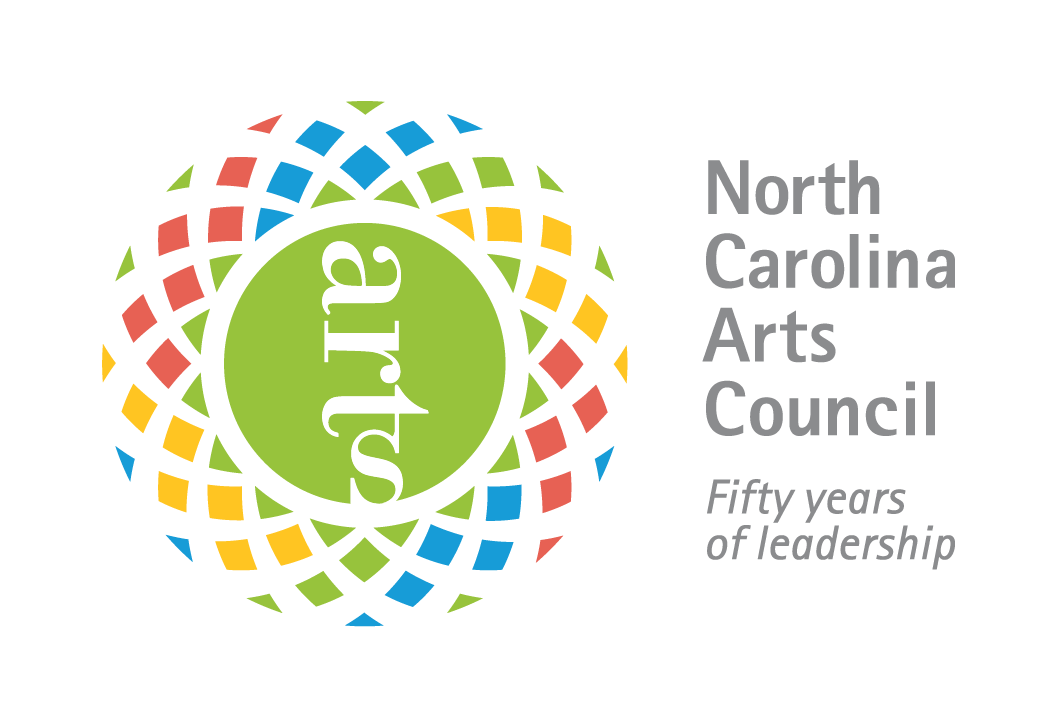Sound of Charlotte Blog
MERGE: Symphonic x Electronic
March 28, 2024By Producer and DJ Liam Collins, known by his stage name Push/Pull
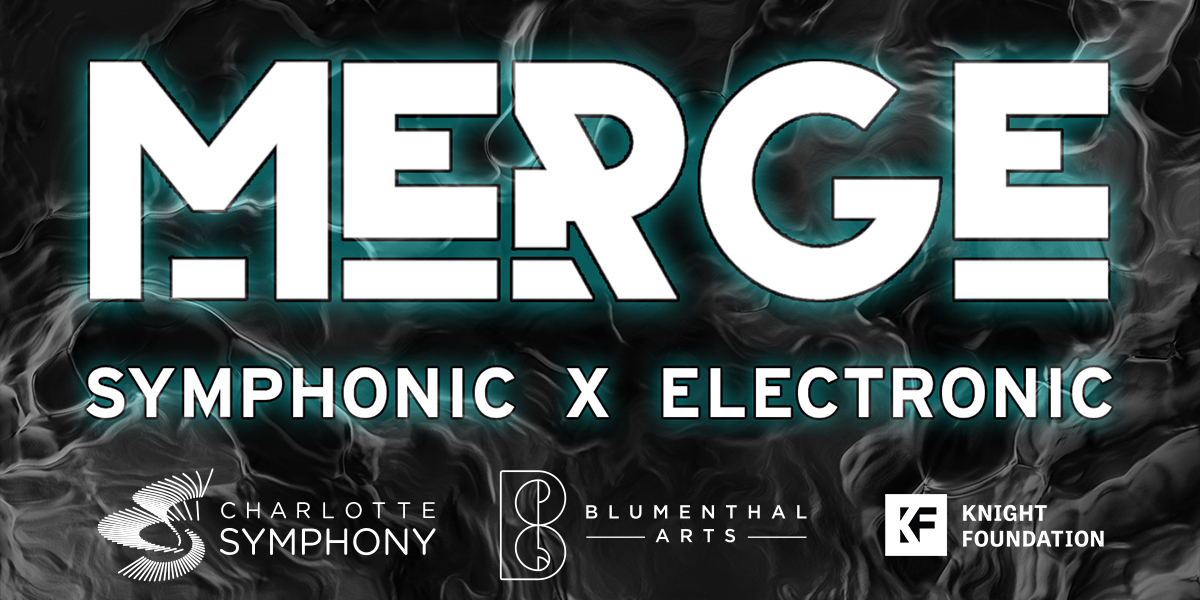
In the heart of an ever-evolving musical landscape, a remarkable fusion is taking place, one that bridges centuries of tradition with the forefront of technological innovation. On May 10 & 11, the Blackbox Theater will become the stage for an unprecedented event that promises to redefine the boundaries of sound and sensory experience.
This event, featuring a live performance by Push/Pull alongside the Charlotte Symphony, is not just a concert; it's a groundbreaking endeavor that merges classical music's rich heritage with the boundless possibilities of electronic music. The collaboration goes beyond mere performance, incorporating visual artistry by Tenorless to create a full sensory experience, unlike anything previously witnessed.
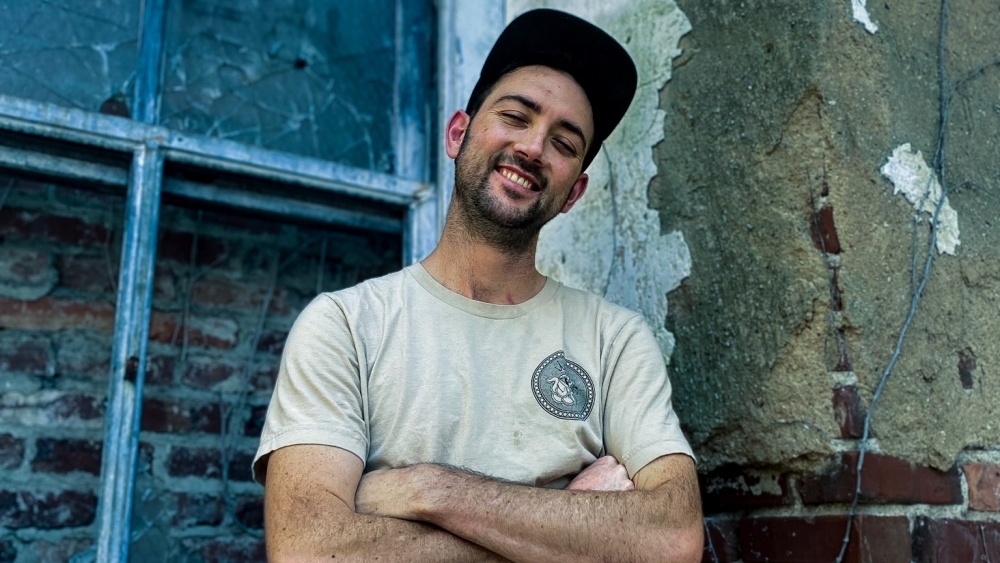
Liam Collins, Push/Pull
At its core, this fusion centers on harmony -- the beautiful synergy of multiple notes working together. Classical music has long explored the depths of tonal harmony, pushing the capabilities of human performance and physical instruments to their limits. In contrast, electronic music, with its precise control over timbres and rhythms, offers creative possibilities that transcend the constraints of traditional instrumentation.
Yet, for all its technological prowess, electronic music can sometimes miss the organic feel and virtuosity that give classical compositions their soul-stirring power. It's a reminder of our human potential and the profound emotional depth that music can reach. After all, classical music is not just a genre but a pinnacle of human artistic achievement, cultivated through centuries of dedicated exploration and mastery.

Tenorless
However, when these two worlds -- classical and electronic -- come together, they remind us that at their heart, both are simply tools in the hands of artists. Instruments and computers alike sit silently until brought to life by human creativity and passion. This event celebrates the merging of classical music's tradition, virtuosity, and composition with the expansive new sound design possibilities that electronic music provides.
As we look forward to this unique blend of past and future, tradition and innovation, we're reminded of the limitless potential of music to evolve and inspire. Join us at the Blackbox Theater on May 10 & 11 for an experience that promises to merge genres and transcend them, creating a moment in time where the essence of musical exploration is celebrated. Read more
Composer Spotlight: Nia Imani Franklin
February 16, 2024
A multi-talented musician, composer, actress, conductor, and singer, Nia Imani Franklin was born and raised in Winston-Salem, North Carolina. Her journey in music began at a young age, taking classical voice lessons and composing her first piece at just six years old. Franklin continued her music education earning a master's degree in Music Composition from The University of North Carolina School of the Arts.
Franklin moved to New York after being selected for the 2017 William R. Kenan Fellowship with the Lincoln Center of the Performing Arts education division. She immediately began working with Success Academy Charter Schools and founded a music club for the students. She also served as a cultural partner for Sing for Hope, a NYC-based non-profit organization. In June 2018, Franklin was crowned Miss New York and earned the title of Miss America the following year.
Franklin's compositions have been performed by orchestras throughout the United States, with notable works like Chrysalis Extended garnering millions of views on TikTok.
The Charlotte Symphony performing Franklin's Chrysalis Extended at Queens University of Charlotte
In 2019, Franklin founded Compose Her -- an initiative aimed at empowering women in music. Through Compose Her, she provides support, mentorship, and opportunities for female musicians, advocating for gender equality in a field historically dominated by men.
Hear the Charlotte Symphony perform Franklin's When I Consider Your Heavens conducted by Christopher James Lees on March 19 at On Tap @ Town Brewing Company. Read more
Art in Motion: Rosalia Torres-Weiner Chosen to Design CSO Roadshow
January 31, 2024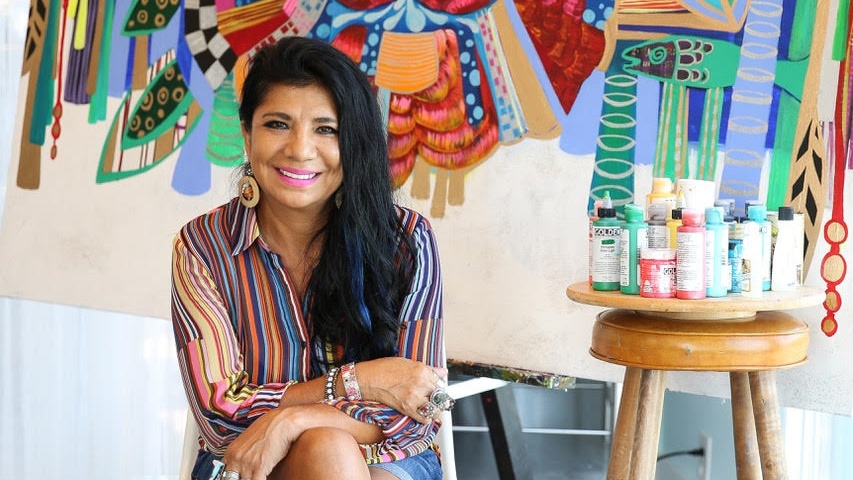
Charlotte-based creative Rosalia Torres-Weiner and the Charlotte Symphony are set to make beautiful music (and art!) together. Rosalia, Chief Executive Artist of Red Calaca Studio, was selected from an incredible field of talented, local applicants to design a wrap for the Symphony's brand-new mobile stage, CSO Roadshow.
Launching this April, CSO Roadshow will deliver free "walk up" concerts to streets, parks, and plazas for all to enjoy, with each unique program created in partnership with the local community. Our mission is to bring the power of live music right to the heart of Charlotte's neighborhoods. An additional highlight? The 40-foot trailer will be adorned with original artwork by Rosalia, bringing the mission to life in a vibrant way.
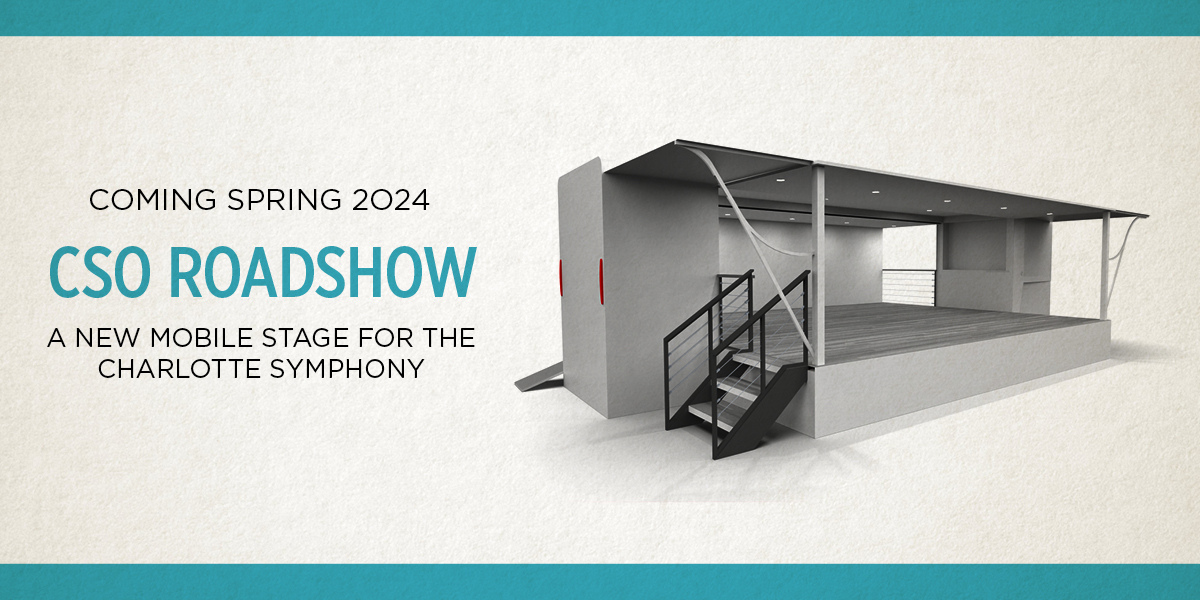
This collaboration is more than just a project for Rosalia, it's a heartfelt journey. "I feel a deep connection to the world of music, as my grandfather was a Military Band conductor in Mexico. His passion for music left a lasting impact on our family," she shared. "As a child, I was part of a junior orchestra and learned various instruments. Though my path diverged, music's influence remains a constant in my life."
Rosalia and the Symphony are now putting the finishing touches on this unique design. Stay tuned, as we'll be giving you exclusive sneak peeks of her work before CSO Roadshow sets off on its inaugural tour through our city's neighborhoods this spring.
This innovative project has been made possible thanks to the generous support of the City of Charlotte; the Arts & Science Council; the North Carolina Arts Council, a division of the Department of Natural & Cultural Resources; the Philip L. Van Every Foundation; and the Mariam & Robert Hayes Charitable Trust.
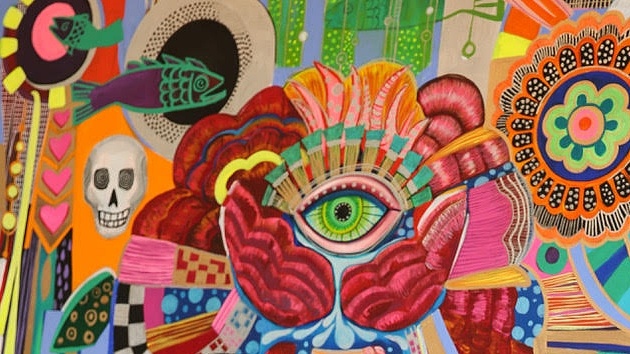
About Rosalia
Rosalia Torres-Weiner is an artist, activist and community leader in Charlotte, NC. Her art captures the themes, colors, and rich symbolism of her native home of Mexico. In 2010, Rosalia shifted the focus of her work from commercial art to art activism, after witnessing the repeated injustices and dysfunction of our immigration system. Her work is featured in the permanent collection of the Smithsonian Anacostia Museum and has been exhibited in venues including the McColl Center for Arts and Innovation, Levine Museum of the New South, Elder Gallery of Contemporary Art, the Leyland Gallery at Georgia College, UNCC's Projective Eye Gallery, the City of Raleigh Museum, the Latin American Center for Arts Gallery, the Birmingham Civil Rights Institute, and the Mexican Cultural Institute at the Mexican Embassy in Washington D.C. Her public murals celebrate the rich history as well as the changing demographics of the South. She also uses her art to document social conditions and to raise awareness about issues that are affecting immigrant communities such as family separation, access to public education, racism, and moving beyond common stereotypes.Her story "The Magic Kite" was adapted by The Children's Theatre of Charlotte, and is also performed as part of her "Suitcase Stories" one-woman show, which was featured at the Smithsonian National Museum of American History. She has been a featured speaker for the North Carolina ASC, Johnson & Wales University, George Washington University, the National Association of Latino Arts and Culture, and the Southern Foodways Alliance. Through her Red Calaca Mobile Art Studio, a 24-foot "Art Truck" she takes the arts directly to people in underserved areas in Charlotte.
Read more
Composer Spotlight: Daniel Bernard Roumain
February 1, 2023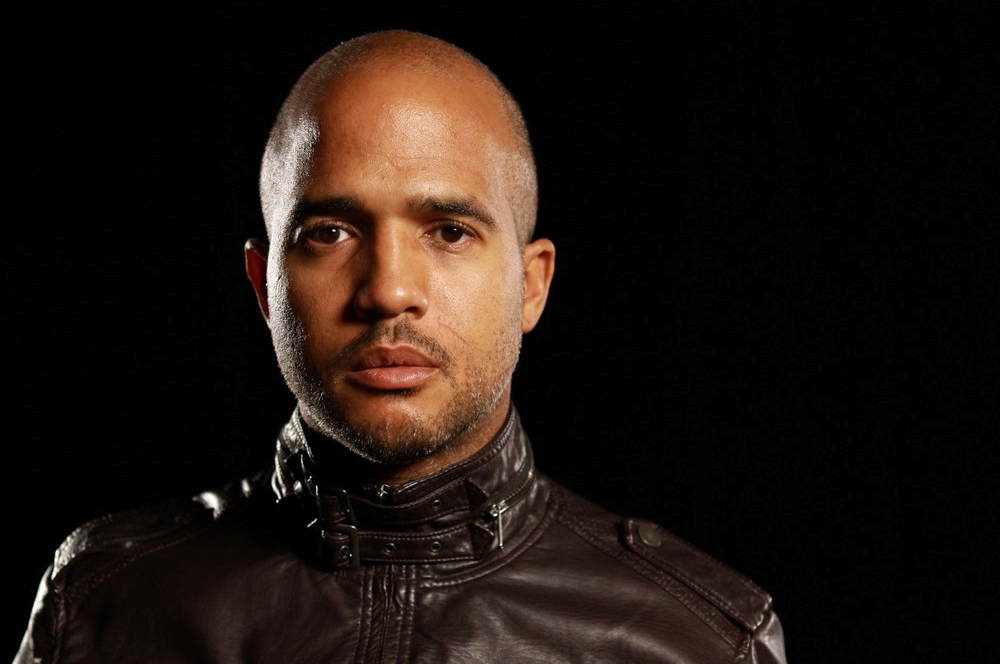
Daniel Bernard Roumain is a Haitian-American composer, violinist, educator, and activist. He is a board member for the League of American Orchestras, a voting member for the Recording Academy GRAMMY awards, and a tenured Associate and Institute Professor at Arizona State University.
Known for his signature violin techniques that fuse electronic and African American music influences, Roumain's work has a distinct genre-bending sound. Described "as omnivorous as a contemporary artist gets" by The New York Times, Roumain has collaborated with the likes of J'Nai Bridges, Lady Gaga, Philip Glass, Bill T. Jones, Marin Alsop, and Anna Deavere Smith.
A prolific composer of solo, chamber, orchestral, operatic, film, theater, and dance scores, Roumain's works have premiered at Carnegie Hall, New World Symphony, Opera Philadelphia, New Jersey Symphony, and more. In the film industry, he has composed for both feature and short films, including the acclaimed Sundance film Ailey; Requiem for the Living, In Color; and Color of Reality. Roumain also clinched an Emmy for Outstanding Musical Composition for his collaborations with ESPN.
In September 2010, the New World Symphony premiered Dancers, Dreamers, and Presidents -- an orchestral tone poem inspired by Ellen DeGeneres and then-senator Barack Obama dancing on The Ellen Show in 2007.
Activism is an important aspect of Roumain's work as a performer and composer. "As an artist-entrepreneur, I am committed to creating projects that speak to social injustice," Roumain says. This theme has been evident in collaborations with symphony orchestras across the country.
On October 24, 2019, Roumain collaborated with The Flynn and Vermont Symphony Orchestra to perform for 24 hours in front of City Hall in Burlington in protest of discriminatory immigration laws in the U.S., and in November 2020, the New Jersey Symphony presented the world premiere of Roumain's i am a white person who _____ Black people. He composed this work in a fraught political climate, following the murder of George Floyd in Minneapolis and the subsequent protests and calls for change across the country.
Memorial Service for Her Majesty Queen Elizabeth II
September 26, 2022
On September 29 at 4 pm, Maestro Christopher Warren-Green will lead musicians of the Charlotte Symphony at the memorial service of H.M. Queen Elizabeth II at Myers Park United Methodist Church.
This service is open to the general public for anyone who wishes to pay their respects following the Queen's passing on September 8.
If you're unable to attend the service, you can watch the livestream and recording below.
Read more
“Charlotte Symphony in Performance” is Back on WDAV
August 5, 2022Spend your Saturday evenings with the Charlotte Symphony this summer with nine new episodes of "Charlotte Symphony in Performance" on WDAV Classical 89.9. Each episode features incredible performances recorded live during the Symphony's celebratory 90th anniversary season.
Tune in at 6 pm on Saturdays, August 6 through September 17, at wdav.org and enjoy the sounds of your Charlotte Symphony.
Schedule:

Beethoven Symphony No. 4
Air date: August 6, 2022, at 6 pmChristopher Warren-Green, conductor
Taylor Marino, clarinet
PROKOFIEV Symphony No. 1, "Classical"
MOZART Clarinet Concerto in A Major
BEETHOVEN Symphony No. 4
This concert was recorded at the Knight Theater on November 19 & 20, 2021.

Brahms Serenade No. 2
Air date: August 13, 2022, at 6 pmRoderick Cox, conductor
Benjamin Beilman, violin
WAGNER Siegfried Idyll
MOZART Violin Concerto No. 5 in A Major
BRAHMS Serenade No. 2 in A Major
This concert was recorded in the Knight Theater on October 29 & 30, 2021.

Vivaldi Four Seasons
Air date: August 20, 2022, at 6 pmChristopher Warren-Green, conductor
Paul Huang, violin
RESPIGHI Trittico Botticelliano
MASCAGNI Intermezzo from Cavalleria Rusticana
BIBER Battalia
VIVALDI The Four Seasons
This concert was recorded in the Knight Theater on October 15 & 16, 2021.

Tchaikovsky's Pathétique
Air date: August 27, 2022, at 6 pmKensho Watanabe, conductor
Sara Davis Buechner, piano
ANNA CLYNE Within Her Arms
CLARA SCHUMANN Piano Concerto in A Minor
TCHAIKOVSKY Symphony No. 6, "Pathétique"
This concert was recorded in the Belk Theater on February 11 & 12, 2022.

Mahler Symphony No. 9
Air date: September 3, 2022, at 6 pmChristopher Warren-Green, conductor (Mahler)
Christopher James Lees, conductor (Leonard Mark Lewis)
Alan Black, cello (Leonard Mark Lewis)
MAHLER Symphony No. 9
LEONARD MARK LEWIS I Will Wade Out
Mahler's Symphony No. 9 was recorded in the Belk Theater on January 14 & 15, 2022. Leonard Mark Lewis's I Will Wade Out was recorded at Queens University on April 3, 2022.

Kabalevsky Cello Concerto
Air date: September 10, 2022, at 6 pmPaolo Bortolameolli, conductor
Christine Lamprea, cello
GABRIELA ORTIZ Téenek-Invenciones de Territorio
DMITRI KABALEVSKY Cello Concerto in G Minor, Opus 49
JOHN CORIGLIANO Symphony No. 1
This concert was recorded in the Belk Theater on February 25 & 26, 2022.

90th Anniversary Concert: Vaughan Williams Dona Nobis Pacem
Air date: September 17, 2022, at 6 pmChristopher Warren-Green, conductor
Christina Pier, soprano
Daniel Okulitch, bass
THOMAS BURGE Charlotte Symphony Fanfare
HOLST Walt Whitman Overture
MALCOLM ARNOLD Four Scottish Dances
VAUGHAN WILLIAMS Fantasia on a Theme by Thomas Tallis
VAUGHAN WILLIAMS Dona Nobis Pacem
This concert was recorded in the Belk Theater on March 11 & 12, 2022.

Ravel Piano Concerto
Air date: September 24, 2022, at 6 pmJessica Cottis, conductor
Stewart Goodyear, piano
Lindsay Kesselman, soprano
William Edwards, tenor
Zachary Taylor, tenor
Robert Wells, baritone
Reginald Powell, bass-baritone
JESSE MONTGOMERY Strum
RAVEL Piano Concerto in G Major
STRAVINSKY Circus Polka
KURT WEILL The Seven Deadly Sins
This concert was recorded in the Knight Theater on January 28 & 29, 2022.

Beethoven Symphony No. 9
Air date: October 1, 2022 at 6 pmChristopher Warren-Green, conductor
Alicia Russell Tagert, soprano
Sara Larsen, mezzo-soprano
Sean Panikkar, tenor
Jordan Bisch, bass
Charlotte Master Chorale
BEETHOVEN Symphony No. 9
This concert was recorded in the Belk Theater on May 20-22, 2022. Read more
“A Historic Event” the CSO Debuts at Little Rock AME Zion Church
June 1, 2022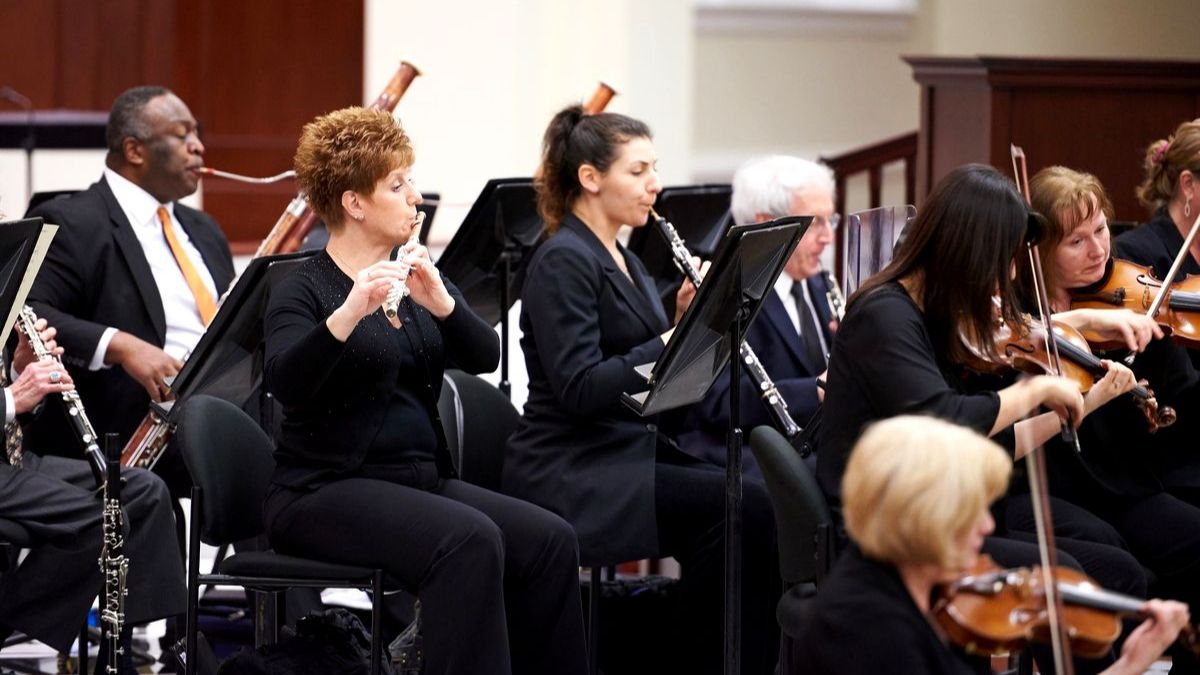
This month, the Charlotte Symphony will make its debut at Little Rock AME Zion Church with a free concert filled with uplifting works that unite us all during challenging times. The Symphony, led by Resident Conductor Christopher James Lees, will perform works by Barber, Mozart, and John Williams and will join forces with the Little Rock AME Zion Church Choir to perform favorites like, "Oh, Happy Day" and "Amazing Grace."
"It's an honor to join the beautiful singing heard every week at Little Rock AME Zion with the artists within the Charlotte Symphony string section," said Christopher James Lees. In a time when we as a society are faced with images of inhumanity on a weekly basis, music & this program will be a vehicle for healing, inspiration, and peace. From the sorrowful sounds of Barber's Adagio for Strings to the full assembly of forces singing 'Oh Happy Day' at the top of their lungs, emotions will run deep in this cathartic & uplifting program. The choir at Little Rock AME Zion Church, led beautifully by Sidney Oliver, has vocal power which matches the potency of their message, and we are privileged to come together with them for this evening of beauty & light."
Little Rock AME Zion Church was founded in 1884 and has been located in Uptown Charlotte for over one hundred years. It is a church that has sought to open its doors to the community in an effort to uplift and empower those it is called to serve.It will be a celebration of the unity found in our diversity!
~ Rev. Dr. Dwayne A. Walker
"We are delighted and excited to partner with the Charlotte Symphony Orchestra!" said Rev. Dr. Dwayne A. Walker. "This will be a historic event. Our Minister of Music, Mr. Sidney Oliver and members of The Little Rock Choirs join me in looking forward to this collaboration. It will be a celebration of the unity found in our diversity! The Charlotte Symphony Orchestra is to be commended for their willingness to reach out to the community. We are honored to be a part of that effort."
The concert will take place at Little Rock AME Zion Church (401 N. McDowell Street) on June 8, 2022, at 7:30 pm. >> Learn more Read more
Amy Orsinger Whitehead Lends a Healing Hand
April 13, 2022
For over 20 years the Charlotte Symphony's Healing Hands program has sent musicians to perform in area hospitals, libraries, senior care centers, and shelters for people experiencing homelessness. Since the program's inception, CSO Flutist Amy Orsinger Whitehead, violinist Elizabeth Pistolesi, and cellist Deborah Kauffman Mishoe -- named The Laurel Trio -- have been using their music to enrich the lives of patients, residents, and community members throughout Charlotte. We recently caught up with Amy to discuss what makes this program so unique and special.
Why is the Healing Hands program so important to you?
Our trio has done lots and lots of Healing Hands performances throughout the years taking our music on the road to wherever the need exists. I think it's very important to meet people where they are because some get to a certain point where they're not able to come to the concert hall to hear us play. If we are able to take ourselves to where people live and give them the gift of beautiful music something they've enjoyed all their lives it's a privilege for us. I think, honestly, that we get as much out of it as the people we perform for. It's really a lot of fun and it's quite meaningful for us because we enjoy being able to make a little bit of a difference in someone's day with our music.

How does the audience respond to your performances?
This has been quite powerful for us. In a situation where we're playing in a dementia setting, you might see a resident that doesn't seem to be responding to anything around them, but you'll see them react and respond to the music and even start singing along! We have a Motown medley that has inspired a lot of spontaneous dance parties, too! The music reaches deep inside people and has an impact that might not be easily achieved outside of music, and that is just so incredible. It's actually pretty hard to play the flute when you feel like you're getting choked up or teary-eyed, and so it can be a bit hard for me, I have to tell myself not to get swept away by the emotion of it. Seeing the immediate impact that we're having to think that we're making even the tiniest difference for people is really wonderful, and we feel so fortunate to get to have that experience.
Your trio performs a lot at senior care facilities and senior centers, but you've also performed at Moore Place, a supportive housing residence for chronically unhoused adults.
Yes, we have! It's a whole different age range than we usually play for, and we love to hear them tell us about their stories and musical connections the songs they remember and the instruments they played in school. Music can help ground us to where we are currently, moment by moment, but it has such a great way to take us back to a previous time in our lives. It's pretty incredible when we get to see this happening and experience the music the way the people listening are experiencing it. It's nice to relive people's memories with them.

How was the program able to adapt during the pandemic?
We were able to pre-record two programs, one holiday program and another non-holiday program for people of all ages. We provided online performances where the video was played and each one of us would announce the next piece live. It was a really great mix of technology and heartfelt love between all of us! We loved being able to interact with the people who were zooming in and we always had a really fun chat thread during the performance. People were really needing something like this in their lives at that moment. And to be able to have a holiday concert in December, when we were so closed off from each other for so long was extra meaningful.

Do you have a favorite memory from a Healing Hands performance?
I think my favorite moment ever was when we were playing at a senior living facility called Renaissance West. That's the place where they have been known to break into spontaneous dance parties and they love to sing along! One time, during a holiday concert, I could see a lady moving from person to person and I could tell she was on a mission to get everyone in the room to do something. We didn't think much of it, but at the end of the concert they brought up to us a Christmas card that they had all signed. It was just so sweet, and I carry that with me in my folder because it's such a special memory. That was such a great day, I can't think of it without smiling.
Learn more about the Charlotte Symphony's Healing Hands Program. Read more
Alan Black on Stepping Back with Grace
March 16, 2022
A fixture of the Charlotte Symphony since 1986, Principal Cellist Alan Black is stepping back from his role of leading the cellists to continue playing in the section. Black will be ending his tenure on a high note at the end of our 2021-22 season, having played the solo in John Corigliano's Symphony No. 1 and capping off with his feature in the Music & Healing concert at Queens University on April 3. We talked with Alan about his decision to step back now, his favorite memory with the CSO, and his hopes for the section as he ends his tenure as Principal Cellist and begins the 2022-23 season as Principal Cello Emeritis.
Why have you decided to step back into the section at this time?
Well you know, I've been thinking about this for a couple years. I'm going to be 65 in a month and I'm thinking to myself, well, what else do I need to accomplish as a principal player? I've done all the solos....my colleagues are great cellists and I feel the talent level has risen. They're great players and so it's time for somebody else to do it. And the stress of sitting principal is actually fairly strong.... I want to enjoy playing without the stress of the job. And since I've done basically everything I've wanted to do and checked off all those boxes, I feel like it's kind of time for me to let somebody else take over the mantle; let somebody younger come on in and provide a fresh vision.

How have the other players reacted to your decision?
I think a lot of them were surprised, which makes me feel good because they were like, "Wait a minute, what? Why are you doing that?" A lot of them didn't realize I was going to be 65 and that makes me feel good....I think my cello colleagues were surprised and they've been very gracious about it.
After so many years as Principal, you must have some great memories.
Oh, yes! The highlight of my career was in 2000 when Yo-Yo Ma was in town performing with us and I got to play the Vivaldi Concerto for Two Cellos with him. Aside from being the most visible and famous musician on the planet, he is also an amazing human being -- warm, engaging, and filled with humility. We had a great time together and hung out at the after-party on the 60th floor of the Bank of America center. I had a great time and will never forget this moment. Ultimately, it was because of this concert that five years later I was able to purchase the cello I bought from him. In many ways, he has been the most influential person in my musical life, and I am filled with gratitude for this.

Do you have any words of wisdom for your successor?
I felt like as a principal the most important thing I could do is manage the section in a way that creates a great working atmosphere; a collegiality within the section. That's been my most important goal for the last twenty years, that I want us to all get along and be happy together....To me, the most important thing is that you've got to treat your colleagues with respect and you've got to treat them right.
What are your hopes for the cello section, and the CSO as a whole, for the coming years?
I hope we can continue to have great dialogue with our management and the board; that we continue to work as a team the way we did during COVID. These have been the best two years of my entire career in terms of our working relationship....it's been great and that's what we should have. We should have a great working relationship: between the players, the management, and the board. We need to do that....and I'm really hopeful for that going forward.

What can you tell us about your part in Music and Healing?
Two years ago I commissioned Leonard Mark Lewis to write [I Will Wade Out] for cello and piano, and we played it at Davidson [College] when I was on faculty there. And I really loved that piece. So I was thinking about what I wanted to do -- because I want to go out strong, like "Yeah, I'm making this decision. I don't have to, but I am because I just want to go out on a high note." And I thought, "You know, the perfect thing to do was play Mark's piece," because Mark and I are very close friends. I really like it, and it will give him a chance as a local composer to be showcased and to have another orchestral piece out there. So I'm really excited about us being able to do that. We've done a lot of tinkering with it since we played it two years ago. So it's been really neat to sort of reconnect with it and find more things that are amazing about it. So yeah, it's going to be fun. I'm really excited about it and it's a new venue that we've never played in, so I think it will be a really nice addition to the program.
Is there anything you'd like to say to the audiences who have been with you for so many years?
I want to say thank you to everyone, it's been such an honor to be Principal Cellist of the Charlotte Symphony. It's been an absolute joy!
Join us at Queens University for Alan's final solo performance as Principal Cellist of the Charlotte Symphony.
Read more
I Am Queen Charlotte: Dr. Shanté Williams
March 8, 2022As the Charlotte Symphony supports I Am Queen Charlotte, we're highlighting stories, experiences, and lives of Black Women who are part of the CSO, from the stage to the boardroom. We asked Dr. Shanté Williams some questions about her personal and professional background and her experience with the CSO.
 |
What is your role with the Charlotte Symphony? Member of the Board of Directors. What is your background? How did you get to where you are today? Born and raised here in Charlotte. By training, I am a former Neuro-Oncology Translational Scientist. I am now the CEO of my own Healthcare Investment Firm. I got where I am today with a lot of hard work, persistence, faith, and most importantly, community. I come from a close-knit family that has supported me every step of the way. |
What drives you?
Two things drive me: curiosity and justice.
I have always been a curious person. I often will watch a documentary or read a book just because I've never heard of the topic or the person.
A business owner I used to work with that became a friend of mine called me a peacemaker and a healer once. I thought that was a bit strange. She said, "peacemakers are warriors and warriors seek justice; justice brings healing and that healing gives communities a voice. You do that for many of us." That was incredibly humbling to hear. I hope to live up to that description.
How do you connect with classical music?
I got introduced to classical music and opera in grad school. They both would transport me to a different place and help me unwind when I became stressed with studying. I began to realize the music seemed to activate my brain in a different way.
What inspired you to join the CSO's Board of Directors?
In Charlotte, there had not been much diversity on some of the fine arts boards. I have a 16-year-old nephew and he has gotten to experience many new things that I was never exposed to. I wanted to make sure that other Black children saw the CSO as a place for them because there were people there that looked like them.
What is your favorite part of being involved with the CSO?
I have an opportunity to listen to and learn from so many different people.
What do you appreciate most about the CSO's role in the community?
CSO is continuing to make strides in listening to the community and co-creating with the community an organization that will last for years to come.
What inspires you, and where do you find it in your everyday life?
I have the opportunity to speak with entrepreneurs on a daily basis, many asking for my help in securing funding for their dreams. That inspires me. It inspires me to see people, who may be experiencing a hardship or are on the receiving end of the inequity of the world, see an opportunity to help others who may be suffering. I like to sleep with the blinds in my bedroom open, and every morning when the sun rays peek through, that inspires me because it reminds me that despite the brokenness of the world, there is another day to build and make things better.
Read more
| Older Posts » |
Latest Posts
- MERGE: Symphonic x Electronic
- Heart of the Home Tour Returns
- Composer Spotlight: Nia Imani Franklin
- More Famous Than Mozart: Joseph Bologne, Chevalier de Saint-Georges
- Art in Motion: Rosalia Torres-Weiner Chosen to Design CSO Roadshow
- Announcing Kwamé Ryan as the Charlotte Symphony’s Next Music Director
- Photos: Charlotte Symphony Annual Gala and Concert
- Five Must-See Concerts of the 2023-24 Season
- 5 Pro Tips for the Best Summer Pops Experience
- A Preschool Performance Three Years in the Making



